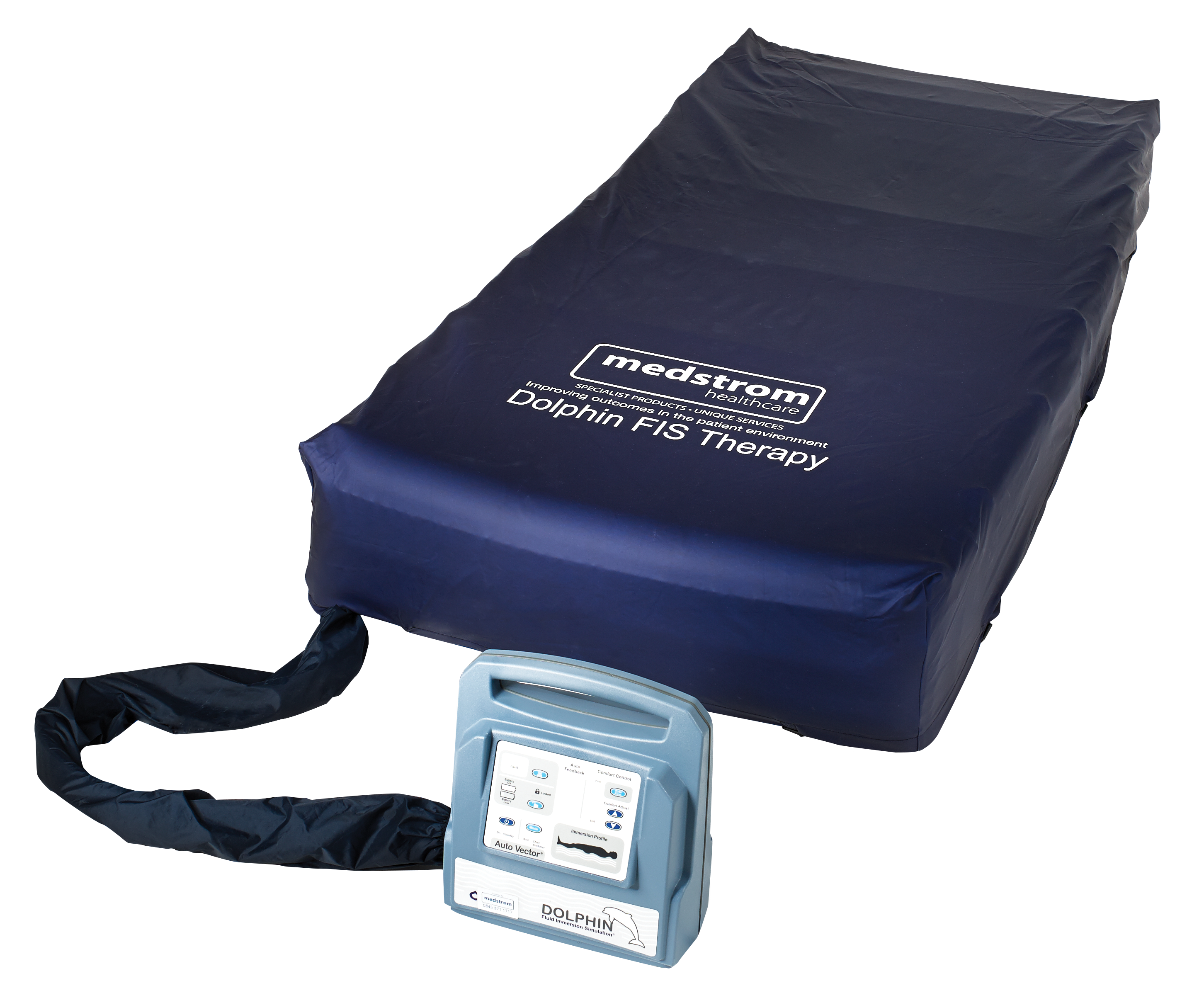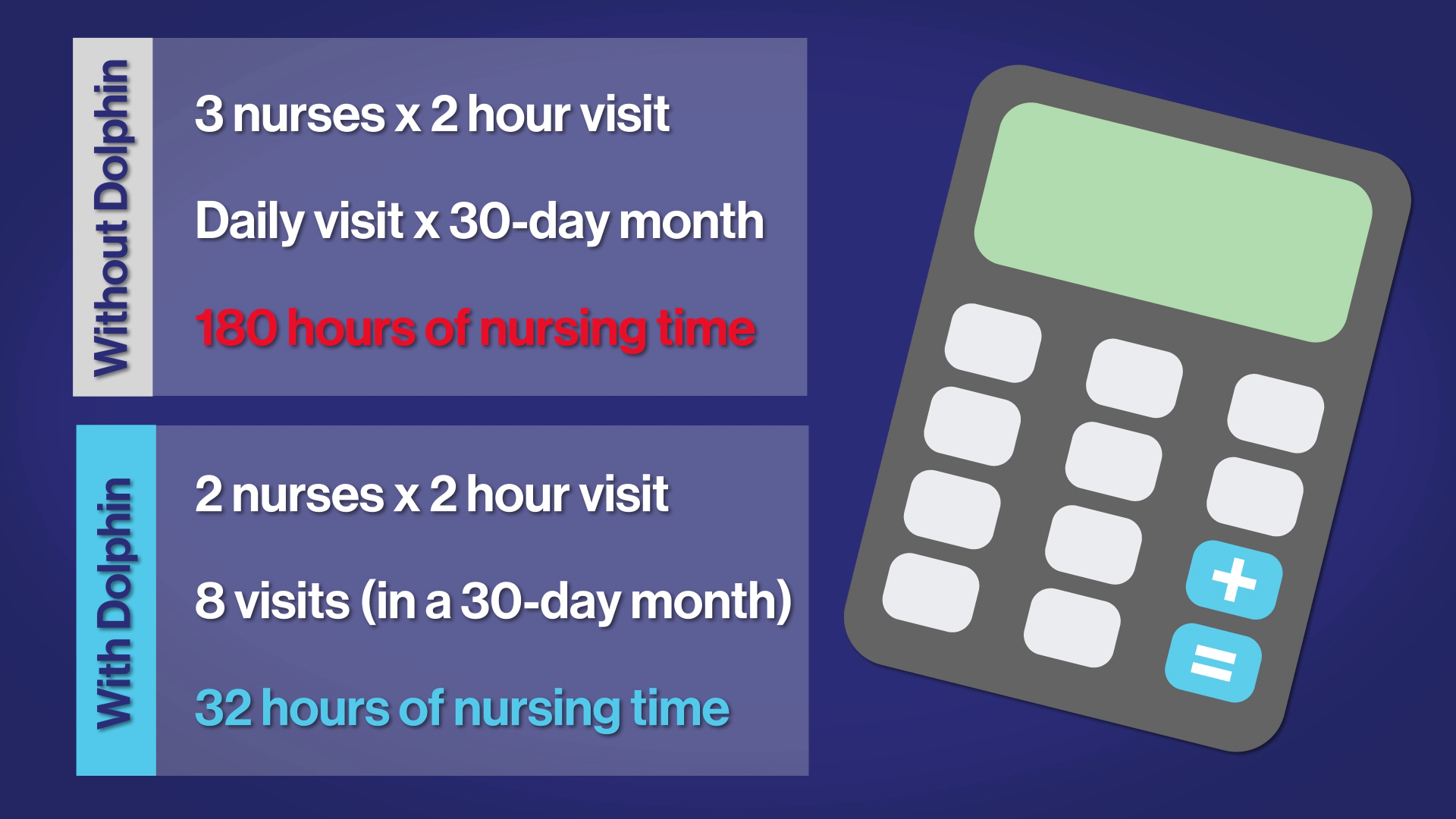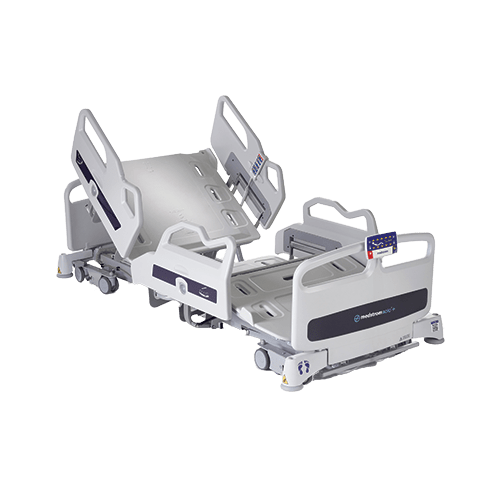
District Nurse Time Saved with the Dolphin Therapy Surface
The short video below describes how 148 hours of district nurse time were saved per month, by placing one community patient on a Dolphin Therapy surface.
This post briefly summarises the video, runs through the time saving calculations, and discusses the how that time could be used to see more patients and increase efficiency.
Introduction
Dolphin Therapy is a unique reactive support surface that simulates a fluid environment. Research has demonstrated that it maintains tissue symmetry,1 mimimises vascular occlusion,2 and prevents tissue ischaemia, even when the patient is nursed directly on a wound.3
Diane Hill, featured in the video above, is a Community Clinical Nurse Specialist. She swapped one of her patients from a traditional dynamic mattress to Dolphin Therapy principally due to:
- Multiple areas of pressure damage
- Intensive nursing intervention (three nurses were needed for two hours per day, for positional and dressing changes)
- Pain management
The introduction of Dolphin Therapy quickly reduced the patient’s pain, increased comfort, and as a result his mental health improved.

District Nurse Time Saved
After Dolphin Therapy placement, the district nursing team significantly reduced interventions over time. The calculations below are based on a 30 day month:
Before Dolphin Therapy:
- Three caregivers required for two hours, daily.
- 2 hours x 30 days x 3 members of staff = 180 hours
With Dolphin Therapy:
- Two caregivers required for two hours, twice a week.
- 2 hours x 8 days x 2 members of staff = 32 hours
Total time saved: 180 – 32 hours = 148 hours

Key Benefits of Time Saved
The first thing to acknowledge is that the time saved doesn’t result in a saving in staff wages. In spite of the hours the team saved caring for this patient, all of them would still be required to deal with heavy caseloads. In addition, persistent and ongoing staff shortages mean that every member of the team is very much needed.
Having said that, what does the saved time mean in terms of seeing more patients? Below, the table shows the number of extra visits that could be achieved as a result of the 148 hours saved. This will vary depending on the length of visit and the number of staff per visit:
Summary
Dolphin Therapy provided very significant benefits for both the patient and the staff caring for him.
In terms of healthcare economics, there is an extra cost associated with Dolphin Therapy rental compared to standard mattresses. However, for the right patients, at the right time, the benefits can be significant:
- Improved patient experience
- Reduction in nursing time
- Accelerated wound healing
- Prevention of skin damage
- Less wound care products required
All these benefits have the potential to save substantially more money than the cost of rental. Additionally, many patients are able to ‘step down’ successfully from Dolphin Therapy once their clinical condition has improved.
Click on the links below to watch further short videos featuring Diane Hill’s experiences using Dolphin Therapy:
Faster wound healing and hospital readmission prevention
Psychological effects of pressure ulcers
References
-
CT scans from St Joseph’s Hospital, Tampa, Florida.
-
Worsley PR et al (2015). The effects of a fluid immersion mattresses; an evaluation of fluid immersion therapy for the prevention of pressure ulcers. 18th Annual Meeting of the European Pressure Ulcer Advisory Panel, 17th September 2015. Faculty of Health Sciences, University of Southampton.
-
Mayes KL et al (2012). Cost effective care without clinical compromise: Incorporating the Dolphin Fluid Immersion Simulation Mattress System into the postoperative care of patients undergoing myocutaneous flaps. Poster presented at Wild on Wounds National Conference, September 12 – 15, 2012, Las Vegas, NV.
-
Medstrom (2023). The effectiveness of Dolphin Therapy fluid immersion simulation support surface. Outcomes for over 3,000 highly complex patients. Available here.










